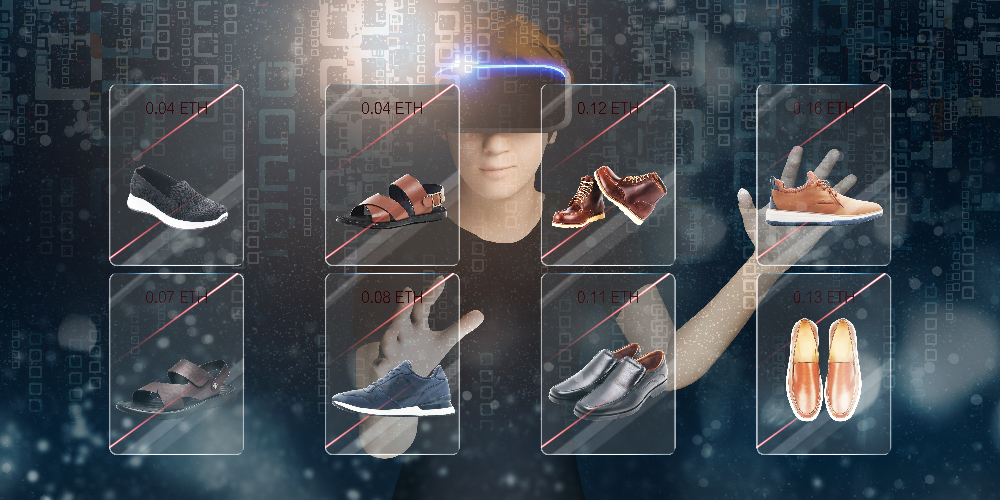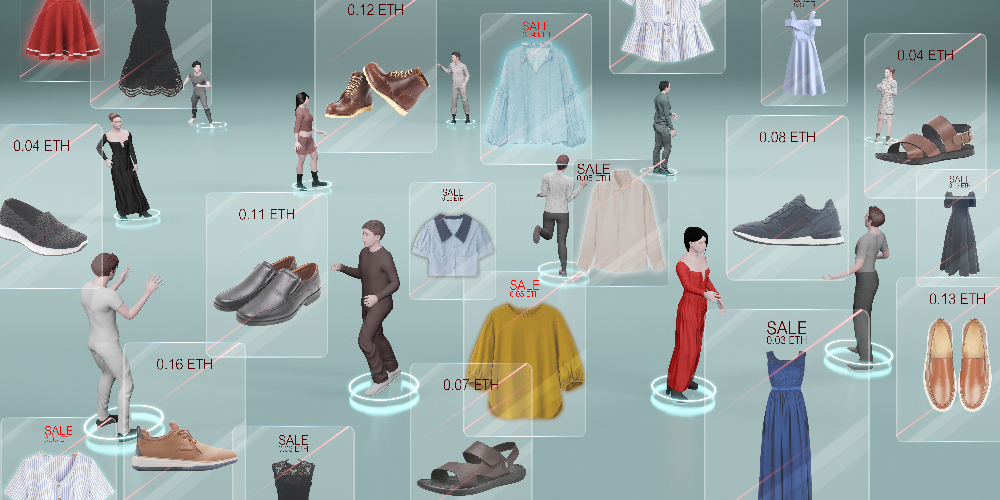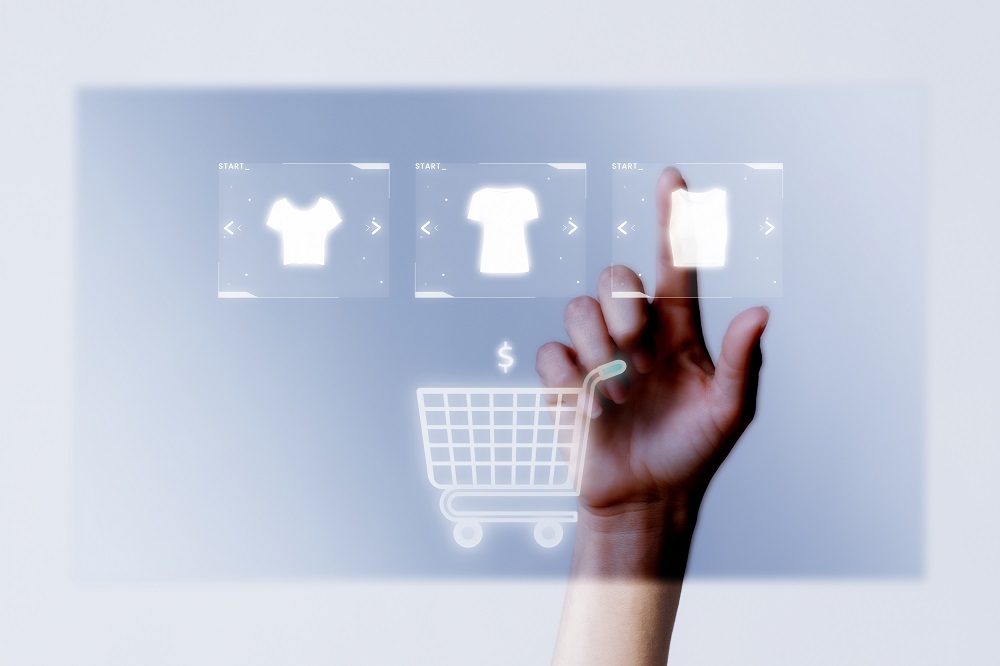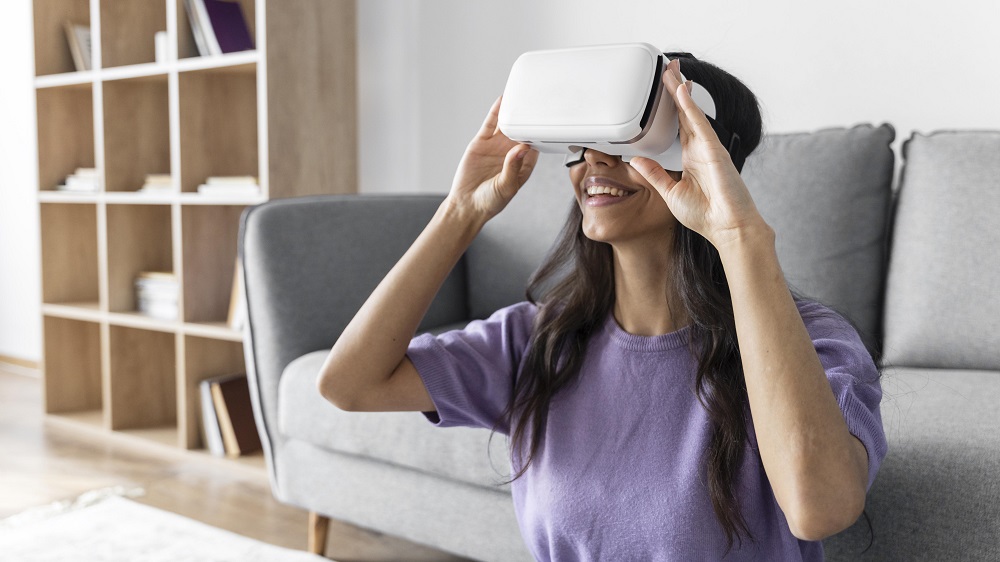The metaverse is a combination of many technological innovations that come together from the digital world to the physical world, and can range since augmented reality, virtual reality, and e-commerce. Much is left to be explored in the future for this new technology that will certainly shape out lives, as it has been already shaping the new era of digital economy. For brands, for a example, a good question is how it will be the metaverse shopping experience.
Acquiring products in the physical world allows your customers to touch or try on the goods before purchasing. Meanwhile, ecommerce has the advantage of convenience, speed and access to the same products. This is the frontier where the metaverse will verge in between the physical and digital world creating a new shopping experience for your customers that will redefine ecommerce forever.
Why is it necessary to enter the metaverse now?

“Opportunities paint them bald” but with a tuft to be taken. This old Greek adage refers to the fact that the moment to take a chance does not last for long, you have to be bold and take a chance on the new. Something similar is happening nowadays with innovation and the leaps and bounds of technology, there is no time to waste!
Giant companies, artists and influencers are investing in land in various metaverses, as for example, the Metaverse Group bought a land in Decentraland valued at US$2.4 million in November 2021. While they are buying, supply is limited, you might think that because these are virtual spaces it is an infinite environment. But then there would not be what in economics is called “scarcity value”.
As if it were the evolution of the species, after the boom and development of the Internet with its great innovations, came e-commerce; and now the metaverse is undoubtedly the next stage. In order not to be left behind, brands, companies, artists and retailers must implement the technological tools to access this new reality.
We cannot talk about preparing in advance because it is already happening and it is time to seize the opportunities. It is time for companies to question how to offer immersive experiences to their customers, how to be present in both realities, how to converge in metaverses. It is the time for pilots to enter through interaction into a virtual world of opportunities.
Reasons to use Metaverse for marketing
One of the great motivations for a company to unleash the marketing experts in the development of their campaigns is the desire to connect in a special way with their customers. How can you literally enter your customers’ homes in an almost surreal way? Undoubtedly with the metaverse shopping experience, so this is the first reason:
- The metaverse makes available a space where to organize brand campaigns and events with an immersive and close approach. Something unprecedented that builds bridges with customers.
- Young audiences are highly attracted to new technologies of which they are natives: large companies like Meta (formerly Facebook) know this and have bet on virtual reality to connect with young people and teenagers.
- The metaverse is a growing field of opportunity for companies: Bloomberg Intelligence projects one billion users by 2024.
- According to Gartner statistics, by 2026 at least 25% of people will spend at least one hour of their days in the metaverse for shopping, entertainment, socializing and even work.
- The same study determines that 30% of companies worldwide will have services and products in virtual reality by 2026.
- Augmented reality makes it possible to close more sales than an online store can offer. What could be better than walking through a store from your home, interacting with other customers like you and satisfying all your doubts virtually as if you were there?
Virtual reality, augmented reality, the multiple metaverses themselves, benefit marketing and also transform it as they force strategies to change, innovate, evolve and create new tools.
Why is it time for the metaverse now?

Although the metaverse is not something new in itself, this is a moment where social, political, economic, psychological and environmental phenomena have converged to make this form of mixing the digital and the real the preferred form of technological evolution towards which today’s world is pointing.
- From the point of view of e-commerce, the consumer public demands transparency, control and participation in the purchasing process, for which being connected and immersed in virtual reality is perfect.
- In the area of gaming and entertainment, online gaming platforms such as FIFA, Minecraft, Among us, Candy Crush, set the precedent for interacting in these virtual spaces with friends and making new ones. This type of collaborative experiences are fundamental in this universe and the metaverse is the perfect breeding ground.
- In the economic field the metaverse is compatible with the NFT market and cryptocurrencies and digital assets, paving the way for the decentralized economy.
- The great acceptance of teleworking and distance learning has not declined post pandemic, the metaverse allows to expand these experiences in an immersive plane totally novel until now.
- The ecological contribution is enormous since the metaverse allows the testing of consumer goods, saving economic resources and reducing the environmental impact.
- Increased productivity by combining the virtual and the real, reducing travel times, providing more time for rest and therefore greater satisfaction and efficiency.
How does the metaverse influence e-commerce?
It is possible to foresee some changes due to the impact of the metaverse on e-commerce:
- Mobile and computer shopping will be left behind, just as shopping through catalogs on magazine sheets was once left behind.
- Predominant payments will be made via cryptocurrencies such as Bitcoin, BUSD, USDT and Ethereum.
- Blockchain as one of the most secure ways to own and exchange digital assets, virtual reality and NFT as a means to enable e-commerce in the metaverse are some of the foreseeable technological changes.
Metaverse shopping experience: What we must know?

The metaverse shopping experiencie is a race that already started and many platforms are rinding this wave. Amazon, for example, has incorporated metaverse tech into its marketplace, with an AR shopping tool called “Room Decorator” which allows the customers to see how the furniture will look like in their spaces.
Amazon metaverse has a lot of perspective to reshape the ecommerce experience. Another example is Warby Parker, this brand has a virtual try-on app that allows the customer to try on their product catalog before buying.
Although is on their early stages, it promises to accelerate in the near future along the growth of tech merging real life shopping with online shopping. With the growing popularity of AR and VR customers feel a lot more confident about the fit and quality of the product.
This could be an advantage for your brand since it can help to reduce returns, and with product personalization/customization it will broaden your customer base.
This is a 3D shopping experience
Technologies such as 3D and Augmented Reality are used to build virtual models of products and let people to interact with these object in the virtual world. With this tech your customers will be able to zoom in and out on different angles, rotate products, pull additional info, or place items digitally inside their real environment to see how it would look before buying it.
The 3D shopping experiences that tend to get more traction are:
- Customization: customers are allowed to add or personalize features of a product.
- Try on: users can see what the item will look like in their bodies (this can include not only clothing, but hair, makeup, accesories, among others).
- Try out: Furniture or home appliances that customers can set in a physical space.
- Interaction: Electronic products that require layout or assembly before the purchase.
- 3D webstore: It offers clients the possibility to interact with 3D models of items.
- Live video consultations: it can replicate one-to-one customer service in an online shopping context, and create opportunities for cross-sell and upsell.
- Interactive user manuals: it can provide a contextual support to customers using the product and respond in real time to their actions. It builds deeper product knowledge and ensures fast product adoption.
- Offline retail: virtual tours for in-store visitors. It requires VR hardware to launch.
That’s how will be shopping in the metaverse. When the customer is ready and satisfied with their choices, they complete the buying process like any other ecommerce checkout process.
How to align your brand to a 3D user experience

There is rendering technology that will allow you to build 3D models of your products, and define everything including vertex positions, surface textures, vectors, scaling and transformations.
For example, WebGL graphics library gives you the ability to create a 3D space within compatible web browsers. WebGL 2.0 is part of the ECMAScript using the HTML5 canvas element, and with advantage that most web browsers now support WebGL without any other additional plugins or add-ons.
Of course, you will need time and experience with modeling and implementation of your 3D products, in any case you have other options like the use a 3D modeling and AR solutions platform like the one we have in Stringnet.
On the other hand, if you’re looking to get your 3D products in an AR environment, you will need an AR app that uses a camera to create an augmented environment based on the real world.
The steps for creating a 3D and AR product visualization are:
- Creating 3D assets based on your product catalog.
- Feature detection points based on camera image and angles.
- Motion tracking to adjust the position of 3D objects in the AR environment.
- Study of the AR environment lighting and rendering the 3D object.
You should take into account that the same rules apply when 3D shopping, shopping in the metaverse or when shopping in a real-life environment. There are other points of interest you must consider for your clients to have the best experience possible from your brand:
- Make sure there are no glitches in your 3D products.
- Product customization and personalization is advisable to reach a broader spectrum of potential clients.
- An excellent customer service and post-sales support is key to ensure brand loyalty.
Want to build an unforgettable metaverse shopping experience?
If what you’re looking for is an immersive and unforgettable 3D shopping experience for your customers, stand out from your competitors, further broaden your client base, and ensure engage and brand loyalty, then Stringnet is what you’re really looking for.
We are experts in 3D modeling with many years of experience and have the capabilities to quickly build realistic 3D models of your products.


